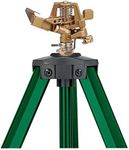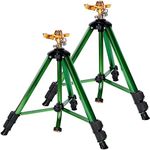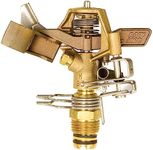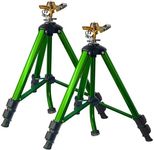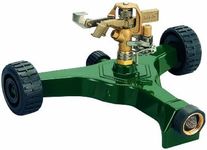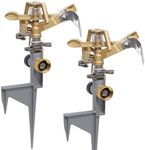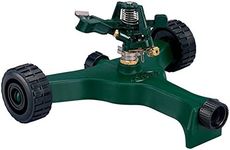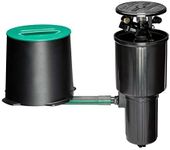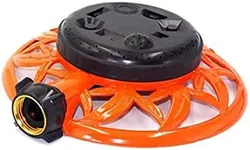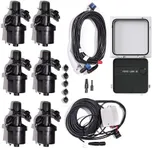Buying Guide for the Best Impact Sprinklers
Choosing the right impact sprinkler for your garden or lawn can make a significant difference in the health and appearance of your plants. Impact sprinklers are known for their durability and ability to cover large areas with a consistent spray pattern. To find the best fit for your needs, it's important to understand the key specifications and how they relate to your specific requirements. Here are the main factors to consider when selecting an impact sprinkler.Spray RadiusThe spray radius of an impact sprinkler refers to the distance the water can reach from the sprinkler head. This is important because it determines how much area the sprinkler can cover. Spray radius can vary from a few feet to over 50 feet. If you have a small garden, a sprinkler with a shorter spray radius will suffice. For larger lawns, you will need a sprinkler with a longer spray radius to ensure even coverage. Consider the size of the area you need to water and choose a sprinkler with an appropriate spray radius to avoid over or under-watering.
Flow RateFlow rate is the amount of water the sprinkler uses per minute, usually measured in gallons per minute (GPM). This spec is crucial because it affects both water usage and the efficiency of your irrigation system. Low flow rate sprinklers (1-2 GPM) are suitable for areas with low water pressure or for conserving water. Medium flow rate sprinklers (2-4 GPM) are ideal for average-sized lawns, while high flow rate sprinklers (4+ GPM) are best for large areas or when you need to deliver a lot of water quickly. Match the flow rate to your water supply capacity and the needs of your plants.
MaterialImpact sprinklers are typically made from plastic, metal, or a combination of both. The material affects the durability and longevity of the sprinkler. Plastic sprinklers are lightweight and resistant to rust, making them suitable for areas with high humidity or salty air. Metal sprinklers, often made from brass or stainless steel, are more durable and can withstand harsh conditions, but they may be heavier and more prone to corrosion. For long-term use and reliability, metal or metal-plastic combination sprinklers are generally preferred, especially in demanding environments.
AdjustabilityAdjustability refers to the ability to change the spray pattern and direction of the sprinkler. This is important for customizing the watering to fit the shape and size of your garden or lawn. Some impact sprinklers offer full-circle (360 degrees) or part-circle (adjustable from 0 to 360 degrees) coverage. If you have irregularly shaped areas or specific zones that need more or less water, an adjustable sprinkler will provide the flexibility you need. Choose a sprinkler with easy-to-use adjustment features to ensure you can tailor the watering to your landscape.
Pressure RatingThe pressure rating indicates the range of water pressure (measured in pounds per square inch, PSI) that the sprinkler can handle. This is important because it affects the performance and efficiency of the sprinkler. Low-pressure sprinklers (20-40 PSI) are suitable for areas with low water pressure, while high-pressure sprinklers (40-80 PSI) are designed for areas with higher water pressure. Ensure that the pressure rating of the sprinkler matches the water pressure available in your irrigation system to achieve optimal performance and avoid damage to the sprinkler.
